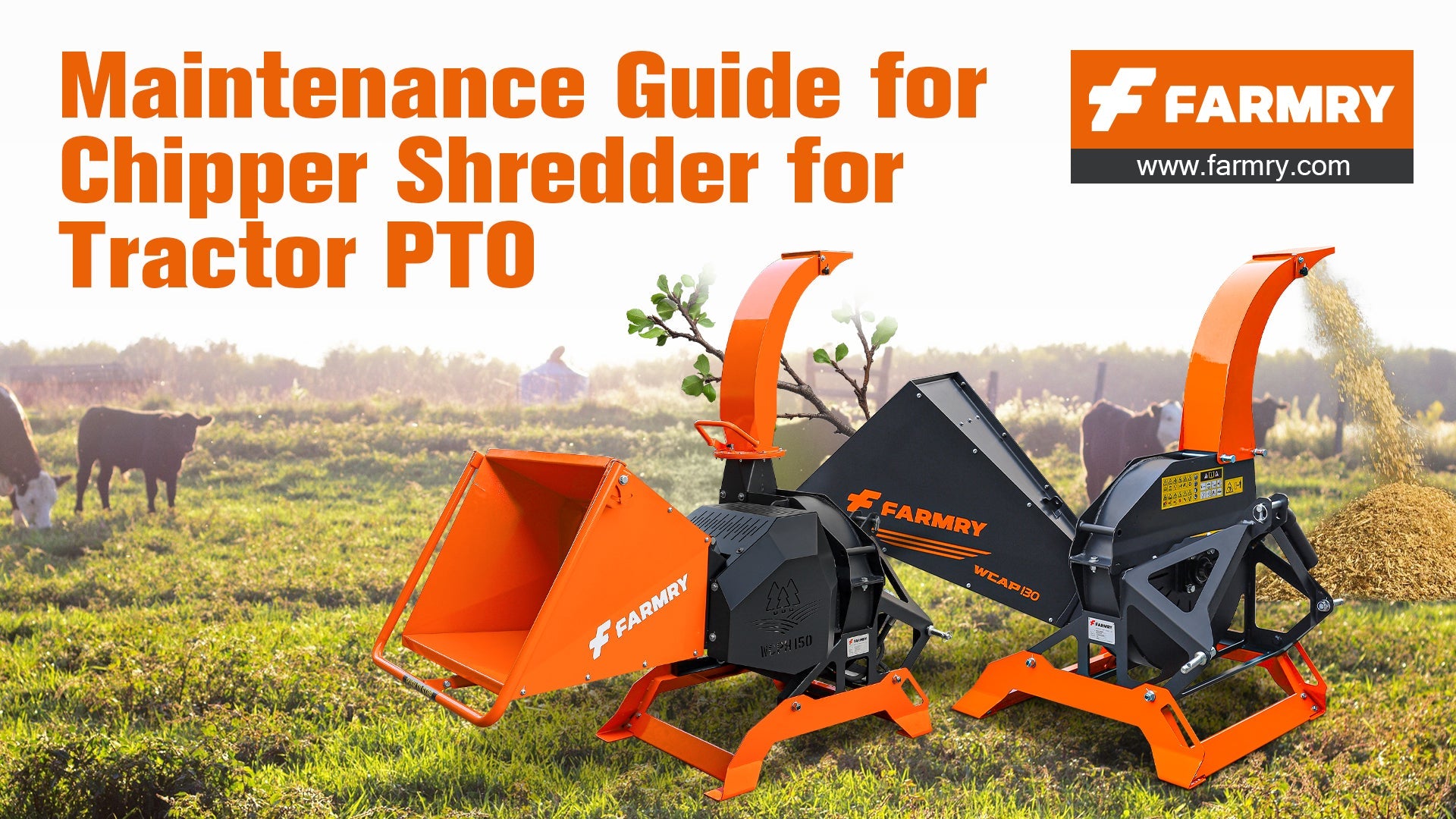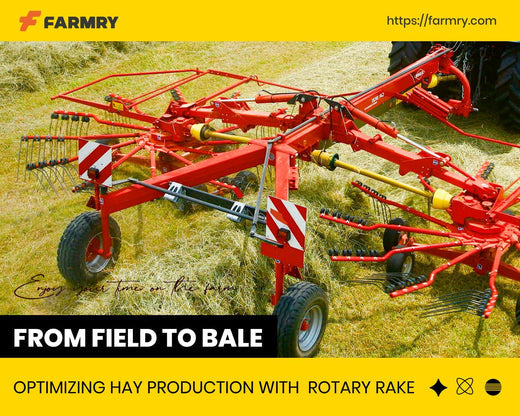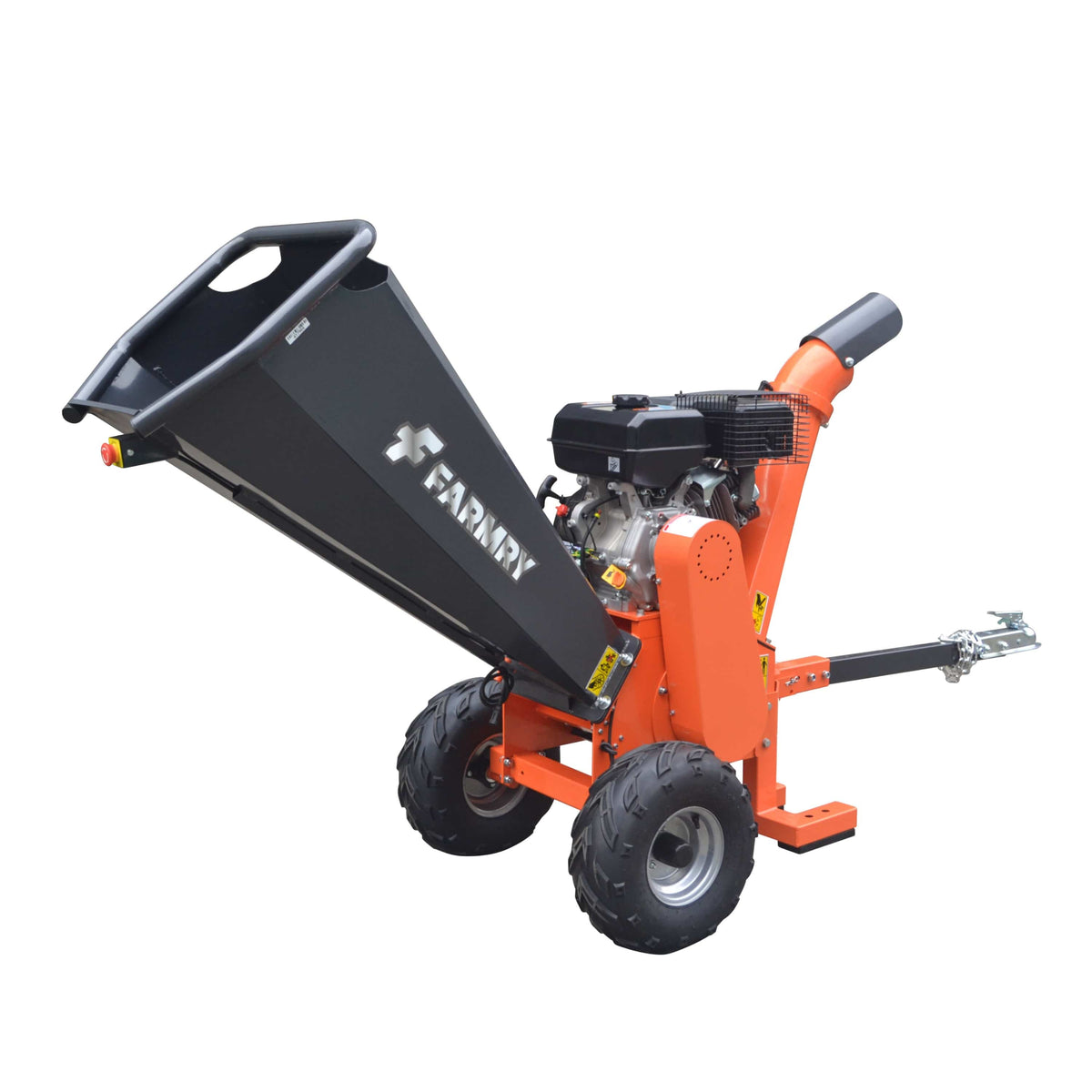PTO Wood Chipper Shredder vs Gas Models: Which One Fits Your Property Best?
 PTO Wood Chipper Shredder vs Gas Models: Which One Fits Your Property Best?
PTO Wood Chipper Shredder vs Gas Models: Which One Fits Your Property Best?
Managing branches, brush, and yard debris on a property—whether it’s a homestead, ranch, orchard, or municipal site—often comes down to choosing the right wood chipper. Two of the most popular options in the U.S. market are the PTO wood chipper shredder (driven by your tractor’s PTO) and the gas-powered wood chipper (with its own engine).
At first glance, both machines are designed to do the same job: turn branches into mulch and reduce bulk. But once you look closer, you’ll see very different features, costs, and long-term tradeoffs. In this guide, we’ll break down how each type works, who they’re built for, and how to match your property’s needs with the right machine.
1. How Each Wood Chipper Works
PTO Wood Chipper Shredder
A PTO wood chipper shredder is equipped to run off the tractor’s PTO (power take-off) shaft. That means instead of having its own engine, the chipper borrows power directly from the tractor. Inside, a heavy rotor or flywheel with sharp rotor knives does the chipping. Branches are fed into the infeed, pulled toward the rotor, and discharged through the chute.
Because these machines rely on the tractor, they are available in a range of models to fit different tractor HP levels—from compact tractors at 15 HP up to larger tractors with 80+ HP.
Gas Wood Chipper Shredder
Gas chippers have a built-in engine that drives the flywheel or rotor. They are fully mobile machines, often on wheels or trailers, and don’t require a tractor. Homeowners and landscapers often like the ease of rolling them around without needing hitching or PTO connections.
However, the engine adds weight, cost, and regular maintenance requirements: spark plugs, carburetors, oil changes, and fuel storage.
2. Power and Efficiency
PTO Models
When driven by a tractor, PTO wood chippers can harness serious power. If your tractor has 30, 40, or even 70 HP, the chipper instantly scales with it. This means you can process larger capacity branches—sometimes up to 8 inches—without bogging down.
The efficiency of PTO machines comes from fewer moving parts: no extra engine to maintain, no belts that slip as much, just pure transfer of torque from tractor to rotor.
Gas Models
Gas chippers are limited by the engine they’re equipped with. A “10 HP” or “15 HP” engine may sound strong, but compared to a tractor’s PTO delivering 25+ HP, it’s not the same word. In real work, this means smaller infeed openings, slower throughput, and more frequent stalling on crooked branches.
That said, gas models still offer plenty of power for suburban properties with lighter brush.
3. Durability and Maintenance
-
PTO Machines: With fewer parts, PTO wood chipper shredders tend to have greater durability. The main wear items are the knives (which need sharpening or replacement) and bearings. Since the tractor supplies the engine, there’s one less system to service.
-
Gas Machines: More parts = more maintenance. Engines need tune-ups, fuel systems clog, and carburetors gum up when fuel sits too long. This makes them more costly and time-consuming over years of ownership.
4. Weight and Mobility
-
PTO Chippers: Heavier equipment that stays hooked to the tractor’s three-point hitch. The weight is actually an advantage—it helps absorb vibration and keeps the machine stable while chipping. But mobility is tied to the tractor: no tractor, no chipper movement.
-
Gas Chippers: More mobile, often with wheels, tow bars, or handles. Great for smaller properties where you need to push around obstacles. But their lighter weight sometimes means they “walk” during operation, requiring re-leveling.
5. Capacity and Features
-
PTO Models: Higher capacity, usually 4–8 inches depending on tractor HP. Many are equipped with hydraulic infeed rollers, adjustable chutes, and heavy flywheels for momentum.
-
Gas Models: Typically max out at 2–4 inches. Best suited for small branches, hedge clippings, or yard cleanup.
Features like self-feed vs. manual feed, chute rotation, and number of knives differ, but PTO machines generally offer the professional-grade options.
6. Cost and Ownership
-
PTO Chippers: The chipper itself may cost less because there’s no engine, but you need a tractor already. If you own a tractor, PTO models are extremely effective and long-lasting.
-
Gas Chippers: Higher upfront cost for the complete machine (because of the engine), and ongoing costs for fuel, oil, and tune-ups. However, for customers without tractors, gas is the only option.
7. Who Each Type Is Designed For
Based on common personas in the U.S. market:
-
PTO Wood Chipper Shredder
-
Designed for: Homesteaders, orchardists, ranches, municipal crews, landscapers with tractors.
-
Best fit: Properties with lots of heavy brush, regular pruning cycles, or fire mitigation projects.
-
Pain points solved: High throughput, long-term durability, fewer breakdowns, higher capacity.
-
-
Gas Wood Chipper Shredder
-
Designed for: Suburban homeowners, small landscapers, mobile crews without tractors.
-
Best fit: Smaller properties, lighter brush, occasional cleanup jobs.
-
Pain points solved: Mobile, self-contained, simple to start, no tractor required.
-
8. Safety and Ease of Use
-
PTO Machines: Require safe hookup to the PTO shaft and an understanding of tractor controls. But once set, feeding material is smooth and consistent. Many models are equipped with safety bars, guarded PTO shafts, and reinforced chutes.
-
Gas Machines: Simple pull-start or electric start. Safer for less experienced users since they don’t involve PTO driveline alignment. However, smaller capacity sometimes means more hand-feeding and higher risk of jams.
9. Environmental and Practical Considerations
-
Fuel & Emissions: PTO models use the tractor’s engine—so emissions depend on that hp source. Gas chippers burn additional fuel, increasing noise and exhaust.
-
Storage: PTO models are bulkier but don’t need fuel prep. Gas chippers are smaller but require fuel stabilizers to avoid clogs.
-
Mulch Output: Both produce chips suitable for mulch, but PTO models create more consistent chip size thanks to higher rotor speed and heavier flywheel momentum.
10. Key Comparison Table
|
Feature |
PTO Wood Chipper Shredder |
Gas Wood Chipper Shredder |
|---|---|---|
|
Power Source |
Tractor’s PTO (15–80 HP) |
Onboard engine (5–20 HP) |
|
Capacity |
4–8 inches |
2–4 inches |
|
Durability |
High (fewer moving parts) |
Moderate (engine wear) |
|
Mobility |
Tractor-dependent |
Fully mobile |
|
Weight |
Heavy, stable |
Lighter, easier to move |
|
Cost |
Lower if tractor owned |
Higher upfront, ongoing fuel cost |
|
Best For |
Farms, orchards, large properties |
Suburban yards, small landscapers |
|
Maintenance |
Knives, bearings |
Knives, engine, belts, carburetor |
11. Choosing the Right Chipper: Match the Machine to Your Needs
The decision boils down to matching your property’s size, available equipment, and workload:
-
If you already own a tractor, a PTO wood chipper shredder is the most effective, long-lasting solution. It leverages your existing hp source, reduces ongoing cost, and offers high capacity.
-
If you don’t have a tractor, a gas wood chipper is still a solid choice. It’s mobile, simple, and designed to meet the needs of small properties.
Remember, the real word is “fit.” Choose the machine that fits your workflow, not just the specs on the page.
12. Final Word
Both PTO and gas wood chipper shredders are built to make your life easier by reducing brush to chips. PTO models bring raw power, durability, and capacity—a perfect match for larger tractors and serious workloads. Gas models bring mobility, ease, and independence—an effective choice for smaller properties without a tractor.
Our team has seen customers succeed with both types. The key is keeping your goals in mind, balancing cost, and choosing the features that actually assist your day-to-day work. Whether you’re keeping an orchard tidy, managing ranch brush, or just cleaning up a backyard, the right chipper means less hassle and more time to enjoy your property.






